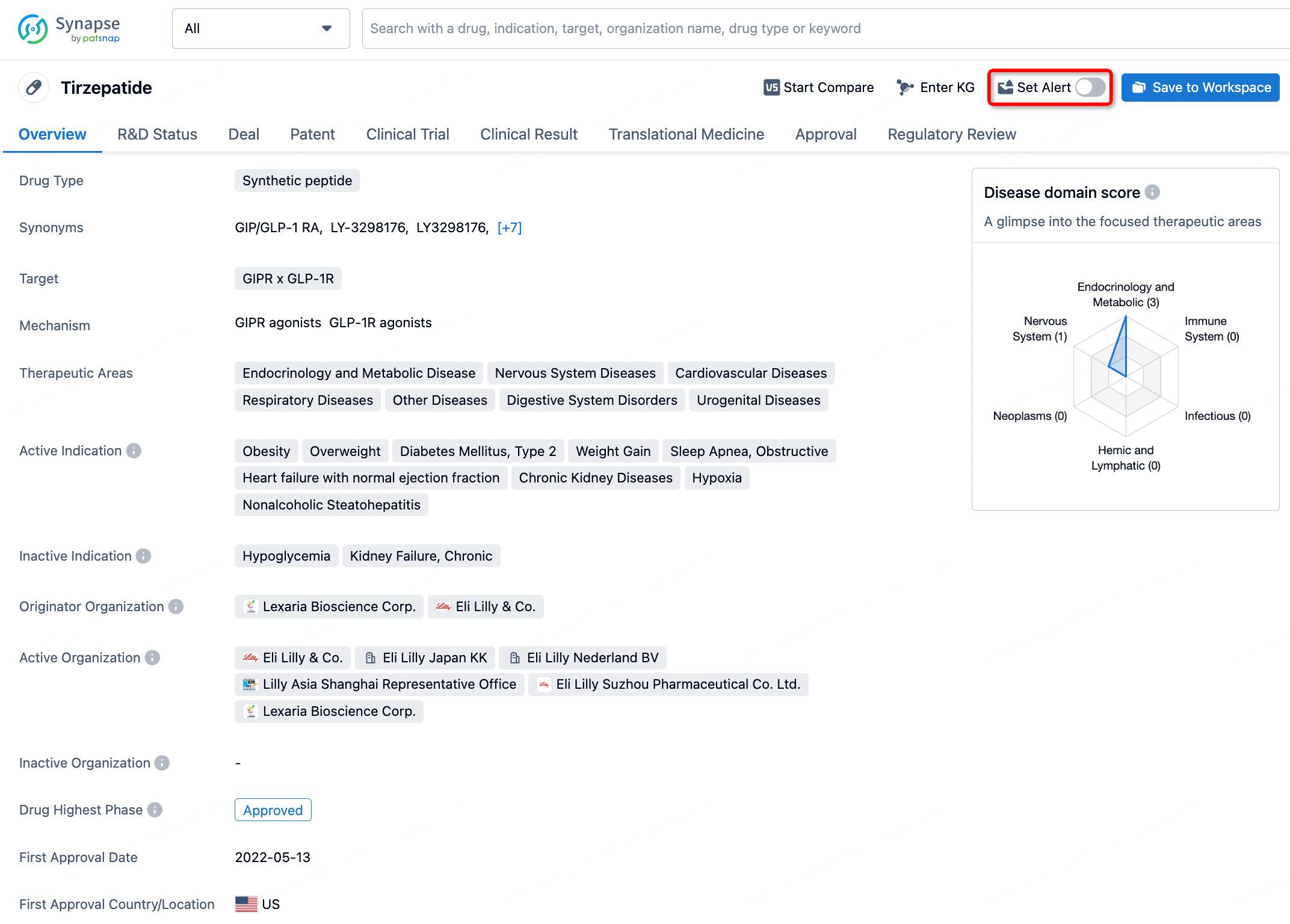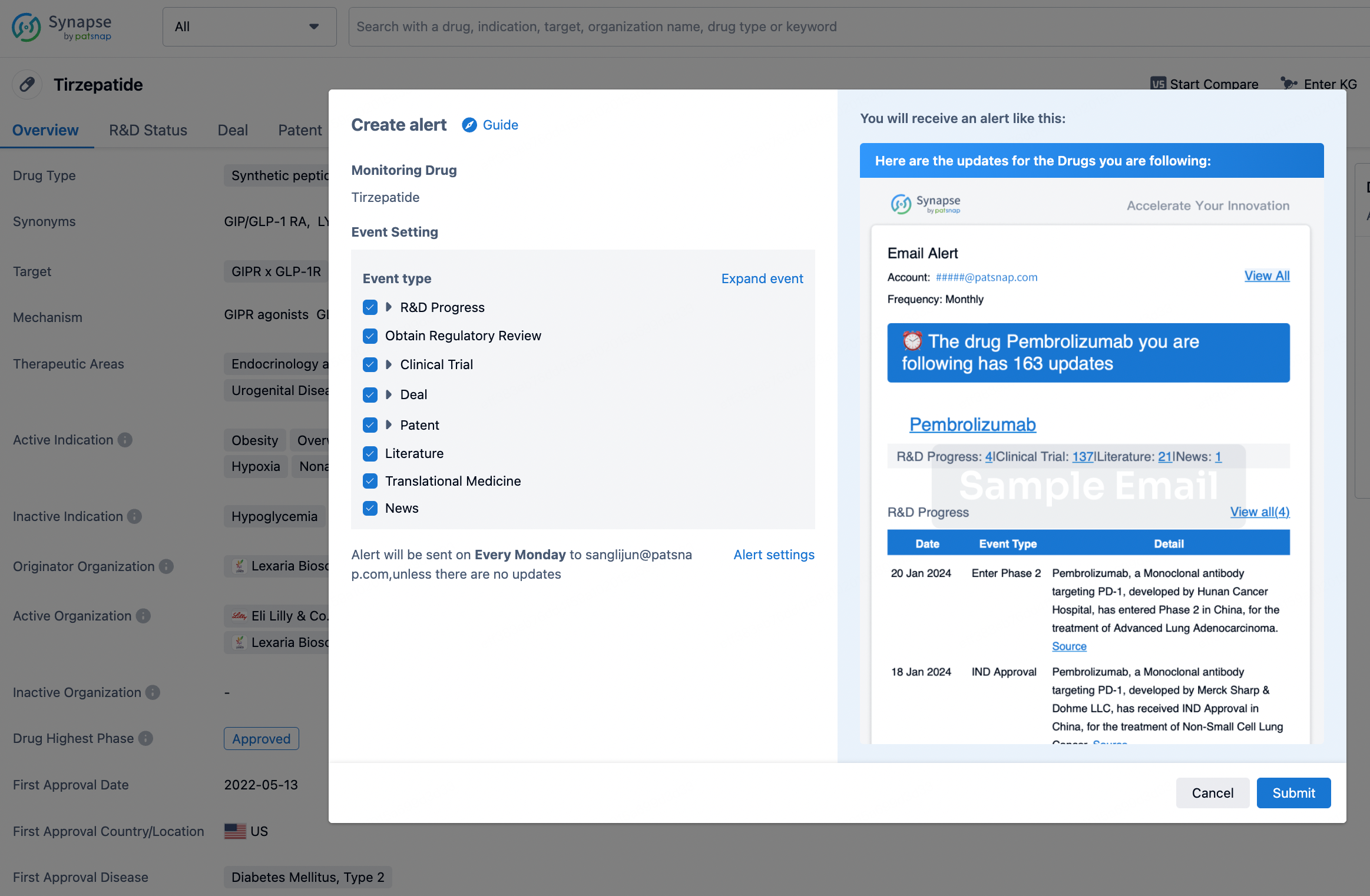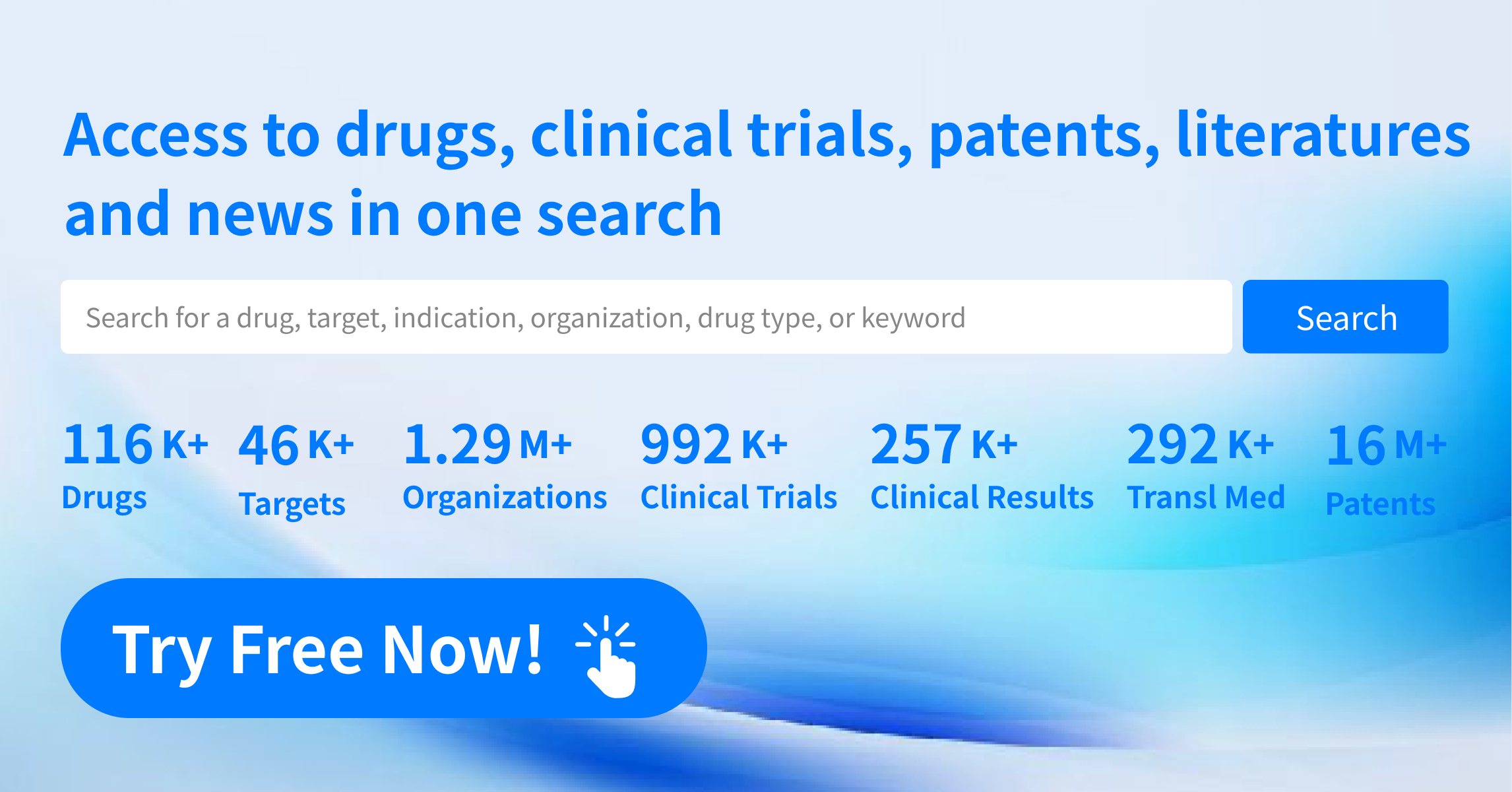Request Demo
What is Aminomethylbenzoic Acid used for?
15 June 2024
Aminomethylbenzoic acid, a drug known under several trade names such as Amben, PAMBA, and Amicar, is primarily utilized for its antifibrinolytic properties. This compound, often categorized as a hemostatic agent, plays a crucial role in the prevention and treatment of excessive bleeding. It works by inhibiting plasminogen activation, which is essential in the breakdown of fibrin clots. As a result, aminomethylbenzoic acid is highly effective in treating conditions associated with hyperfibrinolysis, such as certain bleeding disorders, and is used during surgical procedures to reduce bleeding risk.
Several research institutions and pharmaceutical companies have been involved in the development and clinical trials of aminomethylbenzoic acid. Extensive research has demonstrated its effectiveness in various medical scenarios, ranging from dental surgeries to major cardiovascular procedures. Moreover, ongoing studies continue to explore its potential applications in new therapeutic areas, ensuring that the medical community stays abreast of its evolving benefits.
Aminomethylbenzoic Acid Mechanism of Action
The mechanism of action of aminomethylbenzoic acid is fundamentally based on its antifibrinolytic properties. Fibrinolysis is a process where the fibrin in blood clots is broken down, an essential step in wound healing and the prevention of excessive clot formation. However, in some pathological conditions, fibrinolysis is excessively activated, leading to severe bleeding. Aminomethylbenzoic acid intervenes in this process by inhibiting the activation of plasminogen, a precursor of plasmin, the enzyme responsible for breaking down fibrin clots.
When administered, aminomethylbenzoic acid binds to the lysine binding sites on plasminogen, preventing its conversion to plasmin. This inhibition stabilizes the clot by protecting fibrin from enzymatic degradation. Consequently, the drug effectively reduces bleeding, making it indispensable in both medical and surgical settings where controlling blood loss is critical.
How to Use Aminomethylbenzoic Acid
Aminomethylbenzoic acid is typically administered in various forms, including oral tablets, topical solutions, and intravenous injections, depending on the clinical scenario and the physician’s discretion. The choice of administration route is influenced by factors such as the severity of the bleeding, the patient’s overall health status, and the specific medical condition being treated.
Oral administration of aminomethylbenzoic acid is common for chronic conditions that require long-term management. The onset of action for oral forms can vary but generally takes a few hours to manifest. In acute or emergency settings, intravenous injections are preferred due to their rapid onset of action, usually within minutes, providing immediate therapeutic benefits.
Topical solutions are often used in dental and minor surgical procedures to control localized bleeding. These solutions are directly applied to the bleeding site, offering a targeted approach to hemostasis with minimal systemic absorption, thereby reducing the risk of side effects.
The dosage regimen and duration of treatment with aminomethylbenzoic acid vary widely based on the individual patient’s needs and the specific clinical guidelines. It is essential for healthcare providers to tailor the treatment plan carefully to achieve optimal therapeutic outcomes while minimizing potential risks.
What is Aminomethylbenzoic Acid Side Effects
Like all medications, aminomethylbenzoic acid may cause side effects, although not everyone experiences them. The most common side effects include gastrointestinal disturbances such as nausea, vomiting, and diarrhea. These symptoms are usually mild and transient, resolving with the continuation of treatment or dose adjustment.
More serious side effects, although rare, can occur and necessitate immediate medical attention. These include signs of allergic reactions such as rash, itching, swelling, severe dizziness, and difficulty breathing. Additionally, some patients may experience thromboembolic events, a risk inherent to all antifibrinolytic agents due to their clot-stabilizing properties. Consequently, aminomethylbenzoic acid is contraindicated in individuals with a history of thromboembolic disorders, active intravascular clotting conditions, or severe renal impairment.
It is also essential to monitor patients for signs of central nervous system toxicity, which may manifest as seizures or dizziness, especially if high doses are administered or if the patient has underlying renal dysfunction. Due to the potential for adverse effects, aminomethylbenzoic acid should be used under strict medical supervision with appropriate monitoring protocols in place.
What Other Drugs Will Affect Aminomethylbenzoic Acid
The efficacy and safety of aminomethylbenzoic acid can be influenced by interactions with other medications. It is crucial for healthcare providers to be aware of these potential interactions to manage their patients effectively.
Concomitant use of aminomethylbenzoic acid with other antifibrinolytic agents, such as tranexamic acid, can potentiate the risk of thromboembolic events due to their synergistic effects on inhibiting fibrinolysis. Therefore, such combinations should be avoided or used with extreme caution under close medical supervision.
Anticoagulants and antiplatelet drugs, including warfarin, heparin, aspirin, and clopidogrel, can counteract the hemostatic effects of aminomethylbenzoic acid. Patients on these medications may require careful dose adjustments and enhanced monitoring to balance the risks of bleeding and thrombosis.
Certain antibiotics, particularly those belonging to the class of aminoglycosides, may exhibit nephrotoxic properties that can exacerbate the renal excretion of aminomethylbenzoic acid, increasing the risk of toxicity. Additionally, drugs that affect renal function, such as nonsteroidal anti-inflammatory drugs (NSAIDs), can further complicate the management of patients receiving aminomethylbenzoic acid.
In summary, aminomethylbenzoic acid is a valuable therapeutic agent in the management of bleeding disorders, offering significant benefits due to its antifibrinolytic properties. Understanding its mechanism of action, appropriate usage, potential side effects, and drug interactions is essential for optimizing patient outcomes and ensuring safe and effective treatment. As research continues to unfold, aminomethylbenzoic acid remains a cornerstone in the field of hemostasis, with promising prospects for future therapeutic applications.
Several research institutions and pharmaceutical companies have been involved in the development and clinical trials of aminomethylbenzoic acid. Extensive research has demonstrated its effectiveness in various medical scenarios, ranging from dental surgeries to major cardiovascular procedures. Moreover, ongoing studies continue to explore its potential applications in new therapeutic areas, ensuring that the medical community stays abreast of its evolving benefits.
Aminomethylbenzoic Acid Mechanism of Action
The mechanism of action of aminomethylbenzoic acid is fundamentally based on its antifibrinolytic properties. Fibrinolysis is a process where the fibrin in blood clots is broken down, an essential step in wound healing and the prevention of excessive clot formation. However, in some pathological conditions, fibrinolysis is excessively activated, leading to severe bleeding. Aminomethylbenzoic acid intervenes in this process by inhibiting the activation of plasminogen, a precursor of plasmin, the enzyme responsible for breaking down fibrin clots.
When administered, aminomethylbenzoic acid binds to the lysine binding sites on plasminogen, preventing its conversion to plasmin. This inhibition stabilizes the clot by protecting fibrin from enzymatic degradation. Consequently, the drug effectively reduces bleeding, making it indispensable in both medical and surgical settings where controlling blood loss is critical.
How to Use Aminomethylbenzoic Acid
Aminomethylbenzoic acid is typically administered in various forms, including oral tablets, topical solutions, and intravenous injections, depending on the clinical scenario and the physician’s discretion. The choice of administration route is influenced by factors such as the severity of the bleeding, the patient’s overall health status, and the specific medical condition being treated.
Oral administration of aminomethylbenzoic acid is common for chronic conditions that require long-term management. The onset of action for oral forms can vary but generally takes a few hours to manifest. In acute or emergency settings, intravenous injections are preferred due to their rapid onset of action, usually within minutes, providing immediate therapeutic benefits.
Topical solutions are often used in dental and minor surgical procedures to control localized bleeding. These solutions are directly applied to the bleeding site, offering a targeted approach to hemostasis with minimal systemic absorption, thereby reducing the risk of side effects.
The dosage regimen and duration of treatment with aminomethylbenzoic acid vary widely based on the individual patient’s needs and the specific clinical guidelines. It is essential for healthcare providers to tailor the treatment plan carefully to achieve optimal therapeutic outcomes while minimizing potential risks.
What is Aminomethylbenzoic Acid Side Effects
Like all medications, aminomethylbenzoic acid may cause side effects, although not everyone experiences them. The most common side effects include gastrointestinal disturbances such as nausea, vomiting, and diarrhea. These symptoms are usually mild and transient, resolving with the continuation of treatment or dose adjustment.
More serious side effects, although rare, can occur and necessitate immediate medical attention. These include signs of allergic reactions such as rash, itching, swelling, severe dizziness, and difficulty breathing. Additionally, some patients may experience thromboembolic events, a risk inherent to all antifibrinolytic agents due to their clot-stabilizing properties. Consequently, aminomethylbenzoic acid is contraindicated in individuals with a history of thromboembolic disorders, active intravascular clotting conditions, or severe renal impairment.
It is also essential to monitor patients for signs of central nervous system toxicity, which may manifest as seizures or dizziness, especially if high doses are administered or if the patient has underlying renal dysfunction. Due to the potential for adverse effects, aminomethylbenzoic acid should be used under strict medical supervision with appropriate monitoring protocols in place.
What Other Drugs Will Affect Aminomethylbenzoic Acid
The efficacy and safety of aminomethylbenzoic acid can be influenced by interactions with other medications. It is crucial for healthcare providers to be aware of these potential interactions to manage their patients effectively.
Concomitant use of aminomethylbenzoic acid with other antifibrinolytic agents, such as tranexamic acid, can potentiate the risk of thromboembolic events due to their synergistic effects on inhibiting fibrinolysis. Therefore, such combinations should be avoided or used with extreme caution under close medical supervision.
Anticoagulants and antiplatelet drugs, including warfarin, heparin, aspirin, and clopidogrel, can counteract the hemostatic effects of aminomethylbenzoic acid. Patients on these medications may require careful dose adjustments and enhanced monitoring to balance the risks of bleeding and thrombosis.
Certain antibiotics, particularly those belonging to the class of aminoglycosides, may exhibit nephrotoxic properties that can exacerbate the renal excretion of aminomethylbenzoic acid, increasing the risk of toxicity. Additionally, drugs that affect renal function, such as nonsteroidal anti-inflammatory drugs (NSAIDs), can further complicate the management of patients receiving aminomethylbenzoic acid.
In summary, aminomethylbenzoic acid is a valuable therapeutic agent in the management of bleeding disorders, offering significant benefits due to its antifibrinolytic properties. Understanding its mechanism of action, appropriate usage, potential side effects, and drug interactions is essential for optimizing patient outcomes and ensuring safe and effective treatment. As research continues to unfold, aminomethylbenzoic acid remains a cornerstone in the field of hemostasis, with promising prospects for future therapeutic applications.
How to obtain the latest development progress of all drugs?
In the Synapse database, you can stay updated on the latest research and development advances of all drugs. This service is accessible anytime and anywhere, with updates available daily or weekly. Use the "Set Alert" function to stay informed. Click on the image below to embark on a brand new journey of drug discovery!
AI Agents Built for Biopharma Breakthroughs
Accelerate discovery. Empower decisions. Transform outcomes.
Get started for free today!
Accelerate Strategic R&D decision making with Synapse, PatSnap’s AI-powered Connected Innovation Intelligence Platform Built for Life Sciences Professionals.
Start your data trial now!
Synapse data is also accessible to external entities via APIs or data packages. Empower better decisions with the latest in pharmaceutical intelligence.


